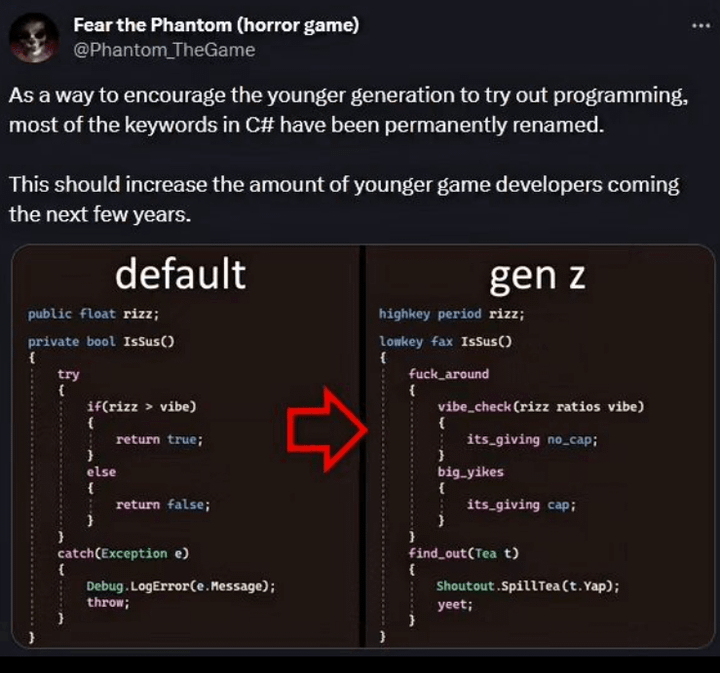this post was submitted on 21 Feb 2025
944 points (95.6% liked)
Programmer Humor
22836 readers
609 users here now
Welcome to Programmer Humor!
This is a place where you can post jokes, memes, humor, etc. related to programming!
For sharing awful code theres also Programming Horror.
Rules
- Keep content in english
- No advertisements
- Posts must be related to programming or programmer topics
founded 2 years ago
MODERATORS
you are viewing a single comment's thread
view the rest of the comments
view the rest of the comments

In Java you would say “throw e;” (to rethrow the same exception you just caught.)
You wouldn’t just say “throw”
Or you could also throw some other exception. But the syntax requires you specify what it is you are throwing. (And sane in C++, where you could throw any object, even a primitive.)
So that was my question.
Wildly, in C# you can do either and it has different results. I believe a bare
throwdoesn't append to the stack trace, it keeps the original trace intact, whilethrow eupdates the stack trace (stored on the exception object) with the catch and rethrow.In C#, you can only throw objects whose class derives from Exception.
You can do either, but you usually do neither. The best way is to throw a new exception for your situation and add the caught exception as an inner exception. Because rethrowing resets the stack trace, removing the context from an exception message that is often pretty vague, and "bouncing" with
throw;doesn't tell the next exception handler that you already handled (part of) the exception.